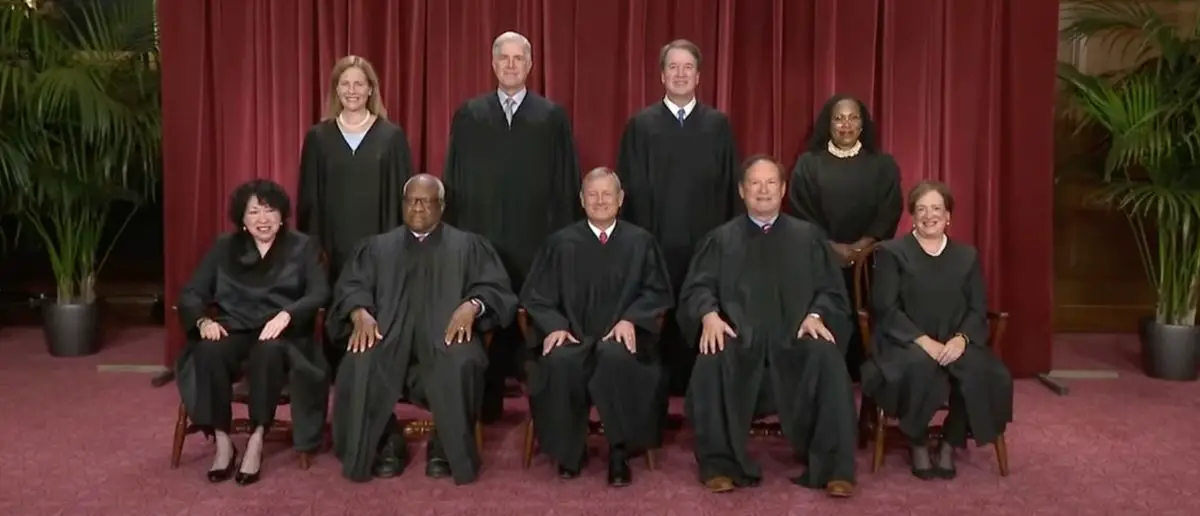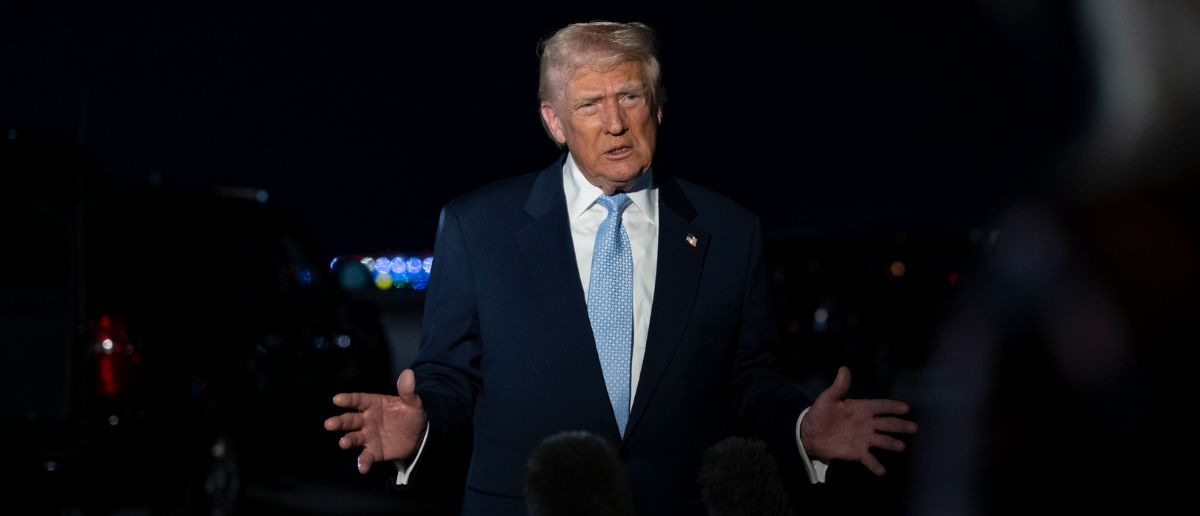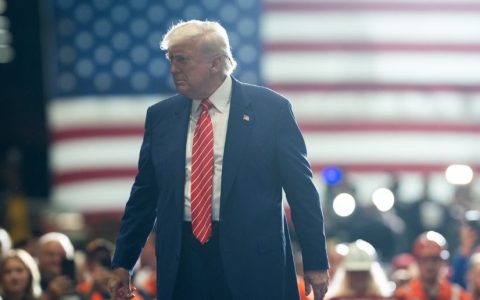
The judicial branch has declared war on the Trump administration. Now the U.S. Supreme Court is weighing in.
And the U.S. Supreme Court has slapped radical Leftist judges with a stark reality check.
Supreme Court Slaps Down Rogue Judges, Backs Trump’s Bold Agenda
The Supreme Court has decisively intervened five times to overturn rulings from Democrat-appointed district court judges, delivering a series of wins for the Trump administration. These decisions, grounded in procedural clarity, signal a judiciary pushing back against overreaching lower courts that have sought to hamstring the president’s authority. From immigration to federal funding, the high court’s actions affirm the administration’s ability to govern without undue interference from activist judges.
The Supreme Court’s rulings sidestepped the substance of the disputes for now, focusing instead on procedural flaws in the lower courts’ orders. Issues at stake include weighty matters like immigration enforcement, the president’s power to remove agency officials, and the allocation of taxpayer dollars. By dismantling restrictions imposed by district judges, the justices have cleared a path for the Trump administration to pursue its policies unimpeded, at least for the moment.
John Malcolm, director of the Meese Center for Legal and Judicial Studies at the Heritage Foundation, offered insight into the court’s motivations. “I think that the recent spate of Supreme Court decisions blocking lower court rulings against the Trump administration indicates that a majority of the justices are growing tired of district court judges issuing broad rulings, often in the form of nationwide injunctions, when they lack jurisdiction and are equally concerned about these judges ordering agencies to disburse millions, if not billions, of taxpayer dollars that will be impossible to recoup if the government ultimately prevails,” he told reporters. His analysis points to a judiciary increasingly skeptical of lower courts overstepping their bounds.
On Wednesday, Chief Justice John Roberts issued a temporary hold on orders forcing the reinstatement of two ousted agency leaders, Cathy Harris of the Merit Systems Protection Board and Gwynne Wilcox of the National Labor Relations Board. This move allows President Trump to exercise his prerogative to remove officials who may not align with his administration’s vision. Roberts’ order highlights the executive’s authority to shape federal agencies, a cornerstone of Trump’s governance strategy.
Trump WH on a roll at the Supreme Court this week, winning on two critical cases (Alien Enemies & federal workers). These rulings let the President be the President, instead of being restrained by activist district court judges! pic.twitter.com/JM7OzbKOvo
— Scott Jennings (@ScottJenningsKY) April 8, 2025
The administration didn’t stop there. It urged the Supreme Court to not only block these lower court orders but also to take up the cases for a full review on their merits. Roberts directed the fired officials to respond by April 15, setting the stage for a potentially landmark decision on presidential power. This proactive approach from the administration demonstrates its commitment to securing long-term victories, not just temporary reprieves.
Tuesday brought another significant ruling, as the Supreme Court reversed a lower court decision that would have forced the reinstatement of over 16,000 fired federal employees. The court found that some of the organizations bringing the lawsuit lacked standing, a procedural misstep that invalidated the lower court’s order. This decision reinforces the administration’s efforts to streamline federal operations, free from judicial meddling.
Immigration, a hallmark of Trump’s policy agenda, also took center stage. On Monday, the Supreme Court blocked two lower court orders that had challenged the administration’s deportation efforts. Chief Justice Roberts halted an order requiring the return of Kilmar Abrego Garcia, an alleged MS-13 gang member deported from Maryland, ensuring that immigration enforcement could proceed without judicial overreach. The administration’s focus on removing dangerous individuals remains a priority, and the court’s intervention supports that mission.
In a separate 5-4 ruling, the Supreme Court upheld the administration’s use of the Alien Enemies Act of 1789 to deport alleged members of the Tren de Aragua gang to El Salvador. The majority, citing improper venue, blocked an order from D.C. District Court Chief Judge James Boasberg, though it emphasized that detainees retain the right to judicial review. This decision bolsters Trump’s ability to protect national security by swiftly addressing threats posed by foreign gangs, a move that resonates with his base.
The court’s liberal justices—joined by Justice Amy Coney Barrett—dissented, with Justice Sonia Sotomayor labeling the majority’s decision an “extraordinary threat to the rule of law.” Justice Ketanji Brown Jackson echoed her concern, warning that it should alarm “lovers of liberty.” Despite their objections, the majority’s ruling stands, affirming the administration’s authority to act decisively in matters of national security.
Not all courts followed the Supreme Court’s lead. A Trump-appointed judge in Texas and a Clinton-appointed judge in New York issued their own orders blocking certain deportations under the Alien Enemies Act. These conflicting decisions illustrate the ongoing judicial tug-of-war, but the Supreme Court’s recent track record suggests it’s leaning toward supporting the administration’s immigration policies.
Last Friday, the Supreme Court delivered yet another 5-4 victory for the administration, blocking an order that would have forced the payout of millions in teacher training grants tied to diversity, equity, and inclusion (DEI) programs. The administration’s push to eliminate what it views as wasteful spending gained traction with this ruling, aligning with Trump’s broader goal of reining in federal overreach.
Malcolm summed up the court’s stance: “The Supreme Court has indicated in very strong terms that, rather than seeking out liberal district court judges in the bluest of blue states, people who think they are being unlawfully detained should file habeas petitions where they are being held, former government officials who believe they were wrongfully terminated should go to the Merit Systems Protection Board, and government contractors who believe they are owed money should go the Federal Court of Claims.” He added, “As to the ultimate merits of these claims, I believe the administration will prevail in most of these cases, but, of course, that remains to be seen.”
These rulings mark a pivotal moment for the Trump administration, as the Supreme Court repeatedly steps in to curb judicial activism that threatens to derail its agenda. While the merits of these cases await further review, the high court’s actions send a clear message: the president’s authority to govern must be respected. For now, the administration can move forward with confidence, knowing the nation’s highest court is watching closely—and acting decisively.
HOLY SH*T 🚨 The Supreme Court handed Donald Trump a MASSIVE win against Judge Boasberg 🔥
All Rogue Judges should be disbarred
I LOVE ALL THIS WINNING pic.twitter.com/SUvUMqE7Nz
— MAGA Voice (@MAGAVoice) April 7, 2025
Stay tuned to the DC Daily Journal.





